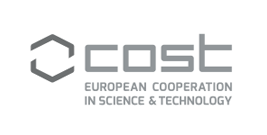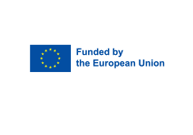Activity-based Protein Profiling to investigate the interactome of the antimalarial early lead Plasmodione
Ilaria Iacobuccia,b , Vittoria Monacod, Agnès Hovasseb, Christine Schaefferb, Stephanie Blandinc, Sarah Cianferanib, Elisabeth Davioud-Charveta
a UMR7042 CNRS-Unistra-UHA, Laboratoire d’Innovation Moléculaire et Applications (LIMA), ECPM, F-67087 Strasbourg
b Laboratoire de Spectrométrie de Masse BioOrganique (LSMBO), Institute Pluridisciplinaire Hubert Curien (IPHC), UMR 7178 CNRS, ECPM, F-67087 Strasbourg
c UPR9022 CNRS-Unistra / U1257 INSERM, Modèles Insectes de l’Immunité Innée (MIR/M3I), IBMC, F-67000 Strasbourg
d University of Naples Federico II, Department of Chemical Sciences, Naples, Italy.
In 2021, malaria caused an estimated 247 million clinical episodes and 619,000 deaths. Parasites belonging to the Plasmodium genus are the causative agents of malaria. During years, several antimalarial drugs have been developed but the parasite quickly produces drug-resistances to all of them. Plasmodione is a novel antimalarial early lead drug that is highly effective in limiting the proliferation of malaria parasites in vitro in the nM range with very moderate toxicity in the host cells. Literature data demonstrate that this early lead drug, could exhibit several modes of action via its metabolite, depending on the parasitic protein target. The objective of the activities is to identify putative plasmodione targets in the P. falciparum proteome. The methodologies used will be those of the affinity-based protein profiling (ABPP) strategy. The approach is aimed at labelling plasmodione protein targets and identifying them by mass spectrometry approaches. The general ABPP method consists in several steps: 1) UV-irradiation of the ABPP probe (structure based on its major metabolite PDO) incubated with the cell lysate, 2) conjugation of biotin through a click chemistry-based reaction, 3) enrichment of the biotinylated proteins through pulldown from streptavidin beads, 4) enriched protein digestion and liquid chromatography-mass spectrometry (LC-MS/MS) analysis. Activity-based probes were first tested on a model protein, the recombinant glutathione reductase. Each step was optimized: photoaffinity labeling, tagging photolabeled proteins by click chemistry with a biotin probe and enrichment of biotin tagged proteins using streptavidin beads. The optimization involved various conditions to screen: from UV-irradiation under oxygen-free conditions and then, CuAAC reaction under oxygen-free conditions with a biotin azide and pull down of the adducts through biotin-streptavidin beads. The whole procedure will be applied to E. coli (WT, and a strain overexpressing PfNDH2) and S. cerevisiae cell systems (WT and a strain k.o. nde1 gene) to validate the experimental workflow. The two cell systems consist of the wild-type strains and the E. coli and S. cerevisiae mutated ones in which two potential plasmodione targets have been overexpressed or silenced, respectively. After the method validation, it will be applied to P. falciparum cell extracts.
COST (European Cooperation in Science and Technology) is a funding agency for research and innovation networks. The COST ACTIONS help connect research initiatives across Europe and enable scientists to grow their ideas by sharing them with their peers. This boosts their research, career and innovation.
One Health drugs against parasitic vector borne diseases in Europe and beyond
OneHealthdrugs
24/10/2022
23/10/2026
27/05/2022
Download file
Maria Paola Costi
Anabela Cordeiro da Silva
Maria Cristina Notarsanto
Maria Esposito and Laura Leonardi


